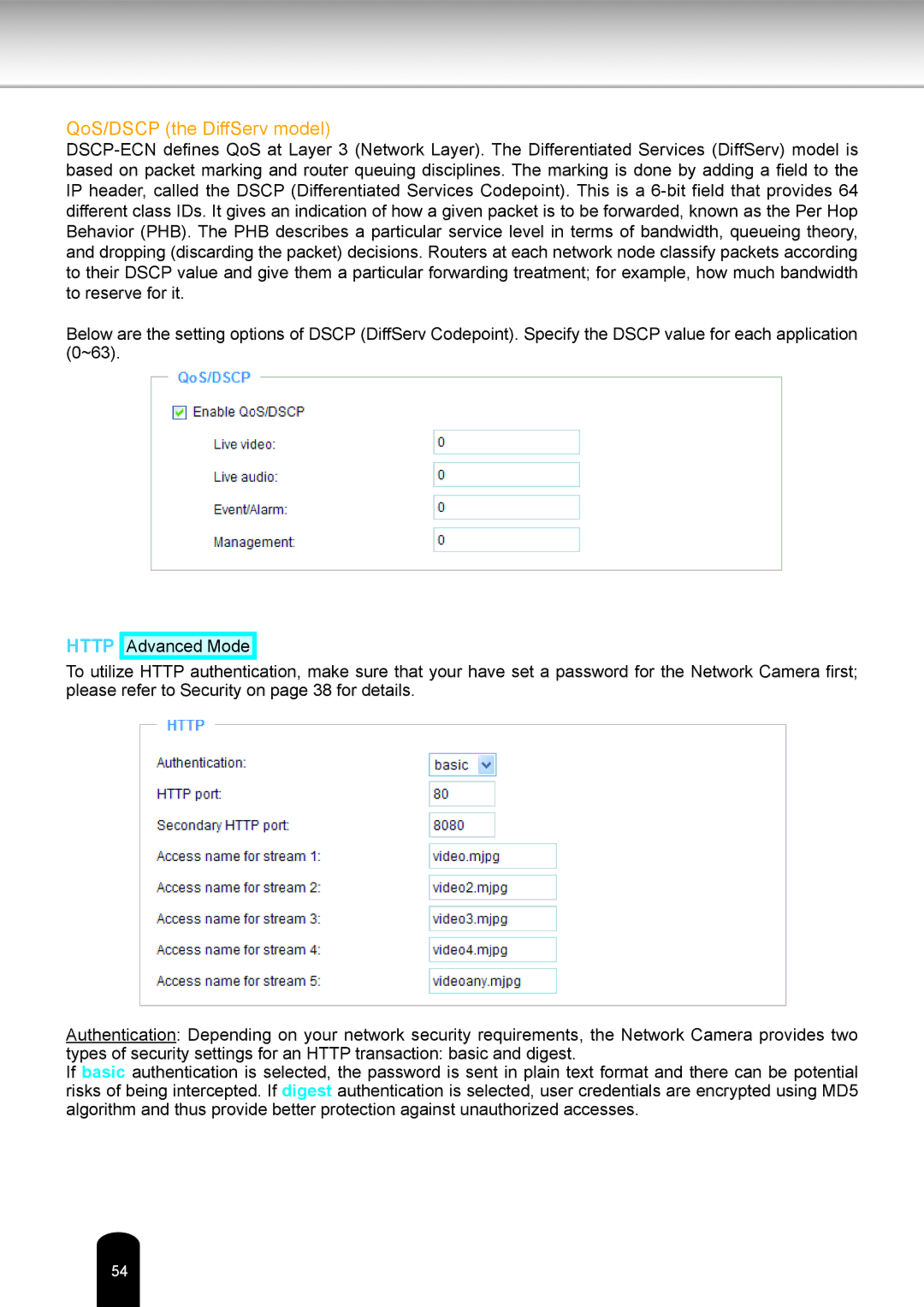
QoS/DSCP (the DiffServ model)
based on packet marking and router queuing disciplines. The marking is done by adding a field to the
IP header, called the DSCP (Differentiated Services Codepoint). This is a
Below are the setting options of DSCP (DiffServ Codepoint). Specify the DSCP value for each application (0~63).
HTTP
Advanced Mode
To utilize HTTP authentication, make sure that your have set a password for the Network Camera first; please refer to Security on page 38 for details.
Authentication: Depending on your network security requirements, the Network Camera provides two
types of security settings for an HTTP transaction: basic and digest.
If basic authentication is selected, the password is sent in plain text format and there can be potential risks of being intercepted. If digest authentication is selected, user credentials are encrypted using MD5 algorithm and thus provide better protection against unauthorized accesses.
54
